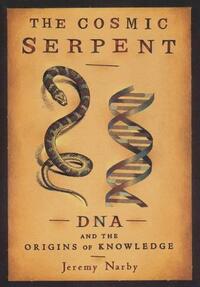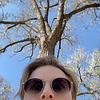Take a photo of a barcode or cover
This was a very interesting book. Written in the first person, the author describes his experiences with the shamanic culture of the Amazon and their use of ayahuasca to gain knowledge. Comparing various fields such as anthropology, biochemistry, biology, and physics, Narby makes comparisons between the cosmic serpents and celestial ladder so prominent in diverse shamanic cultures to DNA. He has some intriguing hypotheses about "junk DNA" and parallels between scientific discoveries and the visions of the ayahuasqueros. I'm not sure how I feel about all of his conclusions, but I am fascinated about all the parallels he finds. I do agree that we need to take a broader look in science and not just try to pigeon-hole or limit ourselves to one particular field. I like the wholistic approach he takes and the validation he gives indigenous culture. He talks about the need for natives to have more control over intellectual properties as far as the use of native plants goes. Pharmaceutical companies take the native plants and simulate the molecular components giving almost nothing to the indigenous people that have shared their knowledge. I like that he tries to understand rather than just dismiss the belief system that has been passed down through generations. He discusses the problems of indigenous people trying to live in the competitive world that is the modern age and even discusses the problems of using western schooling to try and teach people who have such a different way of learning. As I read this book, I found myself wondering how many of these native lands remained unplundered. The native Amazonian people and their cultures are under constant attack by governments and institutions who claim that they are not adequately using their resources. Part of Narby's original intent was to show how efficiently their resources were being used. Narby is not an expert in the scientific areas that he uses to find the links, but he does extensive research and gives us a lot to think about. My biggest concern would be that we often find the evidence most likely to support our predisposed conclusions and I wonder if that might not be the case with some of what he has come up with. Still, it is fascinating and his conclusions certainly left me with a lot to contemplate.
hopeful
informative
inspiring
medium-paced
informative
medium-paced
challenging
dark
medium-paced
Jeremy Narby presents an ambitious expostulation about the “Origins of Knowledge”, examining the indigenous cultures of South America and their regaling mythos about serpents, especially uncommon to our western insight… as ‘those who are hidden’, also known as ashaninka. The journey begins in the Peruvian Amazon’s Pichis Valley, 1985, in the community of Quirishari. The author, in light of research for this supposition, is initiated into a Shamanic experience using Ayahuasca, among other accoutrements, such as Toé, the noxious gas of Datura, and Manioc beer. His experience, of course, was portentous- he experienced serpents and writhing snakes… and instigates from there an argument into ancestral divinations.
Shamanism itself was a term coined to describe the ‘least comprehensible of “primitive” peoples’, hallucinogenic panaceas were outlawed in 1960… and Shamanic peoples were considered mentally deranged, until around the 1980s, when their unconventional remedies were recognized as abstruse customs applicable for study. If the mother of tobacco is Ayahuasca, and the mother of Ayahuasca is a snake… it draws the author’s keen sense of imagination to serpentine symbols. For example, the fissure dividing the right and left side of the brain is an Anaconda… or the twin strands of DNA for twin headed serpents. The author attempts to connect ritualistic legend with biology… drawing parallels between the twins Quetzalcoatl and Tezcatlipoca.
An astounding thing he mentioned was rope, or ‘vine of the soul’, and Jacob’s Ladder, representing in DNA the symbiotic congress of consciousness and tortuous symbolism? Scientists offer that humans have an innate fear of venom, and the primitive man’s everyday threat to life.
“Those who love wisdom must investigate many things.” - Heraclitus
Shamanism itself was a term coined to describe the ‘least comprehensible of “primitive” peoples’, hallucinogenic panaceas were outlawed in 1960… and Shamanic peoples were considered mentally deranged, until around the 1980s, when their unconventional remedies were recognized as abstruse customs applicable for study. If the mother of tobacco is Ayahuasca, and the mother of Ayahuasca is a snake… it draws the author’s keen sense of imagination to serpentine symbols. For example, the fissure dividing the right and left side of the brain is an Anaconda… or the twin strands of DNA for twin headed serpents. The author attempts to connect ritualistic legend with biology… drawing parallels between the twins Quetzalcoatl and Tezcatlipoca.
An astounding thing he mentioned was rope, or ‘vine of the soul’, and Jacob’s Ladder, representing in DNA the symbiotic congress of consciousness and tortuous symbolism? Scientists offer that humans have an innate fear of venom, and the primitive man’s everyday threat to life.
“Those who love wisdom must investigate many things.” - Heraclitus
I hate that I am giving this book a 3/5, but I love how this book made me think a little differently about shamanism, ayhuasca, the foundation of western knowledge and the scientific method.
informative
reflective
informative
reflective
slow-paced
It’s outdated, and a colonial settler whitewashed view of shamanism. Also, the person who discovered DNA was Rosalind Elsie Franklin (a woman) not the two men who stole her research.
Graphic: Drug use, Racism, Sexism, Cultural appropriation, Colonisation, Classism
This is a powerful book that does an excellent job of uniting science and the unknown. Science is often just the unknown with the burden of proof and he really dives into that concept, finding proofs that would not hold in the limited scope of the scientific community, but that hold their weight to any one willing to listen. Uniting current scientific knowledge with past knowledge and ancestral knowledge is a job more scientists need to do. This asks and answers big questions in a bridging of science, philosophy, and anthropology. I thoroughly enjoyed this book.
informative
reflective
slow-paced
informative
medium-paced





